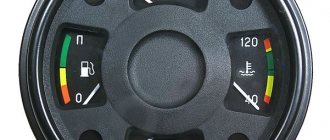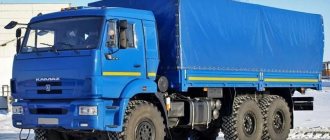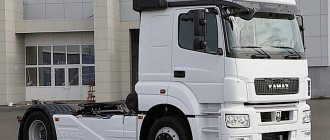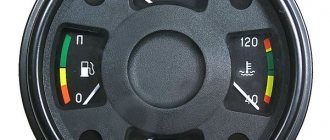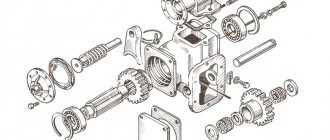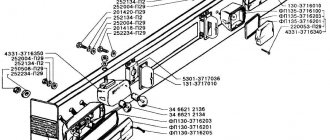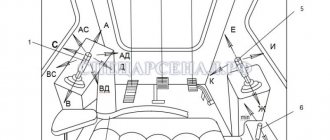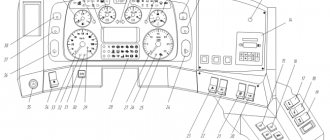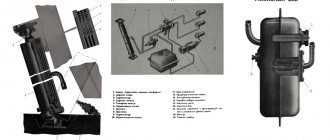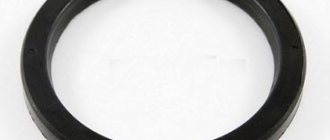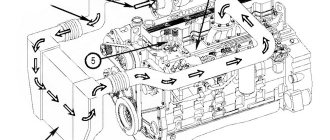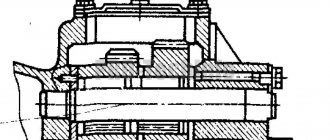Payment for goods and downloading of the book in electronic form (PDF format) is made on the website.
To do this, you need to find the book you are interested in and click on the “Buy” button. The price of the book is indicated on the button.
For convenience, the price on the website for residents of Russia, Belarus and Kazakhstan is presented in rubles.
For residents of Ukraine in hryvnias, and for all other countries - dollars.
After clicking on the “BUY” button, a payment window will open where you can select a payment system with which you can pay for the selected book using any bank card (Visa, MasterCard, MIR, etc.)
When you click on the “Pay by bank card” button, the Portmone payment system will open, which is the easiest way to make a payment.
In addition, the website offers four payment systems for payment:
- Yandex (payment from any bank cards, Yandex Money account, QIWI Wallet, terminals, etc.);
- Portmone (payment from any bank cards, Portmone account);
- PayPal (payment from any bank cards, PayPal account);
- WebMoney (payment from any bank cards, payment from WebMoney wallets).
Payment via Yandex Cashier
After selecting payment via Yandex, the Yandex Cashier payment system will launch, where you need to select a convenient payment method (bank card, QIWI, Yandex Money account, etc.)
After specifying payment details and confirming payment, payment for the goods will occur.
If you have a bank card in a currency other than the ruble, then the money will be debited from the card at the rate of the Central Bank of Russia at the time of the purchase.
This payment method is optimal for residents of Russia, Kazakhstan and Belarus.
Official website of the Yandex Kassa payment system https://kassa.yandex.ru
Description of KamAZ brakes
Each car produced by the Kama plant has four types of brake equipment on board.
- Main brake;
- Reserve brake;
- Stop brake;
- Auxiliary brake.
These types of equipment cope with the task without the need for mutual assistance, and as a result, the indicator of the work performed reaches efficiency. If automatic braking is accompanied by the release of air masses from the profile, the machine has an emergency release mechanism. The principle of using the device is to resume operation. Monitoring and signaling sensors for status and performance are also installed.
The main brake reduces the KamAZ speed limit, down to a complete stop. Vehicle stopping devices are located on six wheels of the vehicle. The operating principle of the drive is based on air under pressure. The unit is equipped with two circuits, the action of which extends to the bow and stern axles separately.
Activation of the main stopping mechanism occurs through a foot lever, which transmits the force to the brake valve. Brake chambers are converters of air pressure force into movement of brake pads.
The backup motion damper reduces the speed limit and stops the car when the main brakes fail or the function is not fully performed by the main device.
The stopping system forces the vehicle to remain stationary on a level surface, without intervention from the pilot. Feature of the stopping mechanism, paired with a backup brake. The activation is actual after the lever is moved to the required position.
KamAZ parking and auxiliary brakes:
From the above it is clear that at KamAZ the stopping methods used are the same for the main, backup and stopping motion dampers based on the stern. As for the backup and stopping dampers, they have the same pneumatic propulsion.
An additional motion damper works to reduce the degree of heating of the equipment, the main speed reduction device. This includes the power plant muffler, which switches the exhaust manifold, and turns off the fuel mixture input.
Emergency unlocking wedges the pads if they worked automatically and stopped the car. The emergency stop drive is double, activated both by pneumatics and mechanical screws. This was done in order to unlock energy batteries in automatic or manual mode.
Payment via Portmone
After selecting payment through Portmone, the payment system will launch, where you need to select the payment method: bank card or Portmone account.
The price in the Portmone payment system is converted into dollars at the exchange rate of the Central Bank of the country where you are located.
If you have a bank card in a currency other than the dollar, then the money will be debited from the card at the rate of the Central Bank of your country at the time of the purchase.
After specifying payment details and confirming payment, payment for the goods will occur.
Official website of the Portmone payment system https://www.portmone.com
About the history of the model's creation
Our cargo carriers widely use equipment of a similar design. And these are all cars of the “big European seven”. There were no domestic trucks of this class in mass production until 2013. The Kama Automobile Plant could not build a competitive two-axle highway based on components and assemblies used in the company’s classic line of trucks. Therefore, they took the path of creating a fundamentally new model, which became the KamAZ-5490.
It also has an industry index “in the European style: M1840. The letter “M” denotes the truck’s family – long-haul, 18 – a load capacity of 18 tons, and 40 – the first two digits of engine power (in this case – 401 hp). KamAZ-5490 next to Mercedes Axor. This car was created in collaboration with, in the image and likeness of the previous generation Mercedes Axor. The car's premiere took place in 2011 at the ComTrans exhibition. And by October 2013, the fruit of cooperation between German and Russian specialists was put on the assembly line.
In 2013, they managed to make 96 of these production vehicles. In 2014 – 600. And in 2015, KamAZ-5490 took first place in sales in the truck tractor segment on the Russian market and has since confidently maintained its leadership. The number of produced saddlers of this model has reached 2.6 thousand per year. There is obvious commercial success of the new trucks in the domestic market. They are increasingly found on the roads. And the Kama Automobile Plant continues to create other promising models on the same unit base. In the KamAZ-5490 truck tractor, the share of domestic components is about sixty percent, and the rest is imported. Including driving components - engine, gearbox, drive axle, and much more.
Payment via PayPal
After selecting payment via PayPal, the PayPal payment system will launch, where you need to select the payment method: bank card or PayPal account.
If you already have a PayPal account, then you need to log into it and make a payment.
If you do not have a PayPal account and you want to pay using a bank card via PayPal, you need to click on the “Create an Account” button - shown with an arrow in the picture.
PayPal will then prompt you to select your country and provide your credit card information.
After specifying the information required to make the payment, you must click on the “Pay Now” button.
Official website of the PayPal payment system https://www.paypal.com
Cabin and its equipment
The cab of the KamAZ-4310 vehicle is three-seater, all-metal, tiltable forward, with thermal and waterproofing and soft upholstery. The front facing panel of the cabin is liftable, which provides free access to the heater, windshield washer, electrical equipment, wires and pipelines of electrical and pneumatic systems. In the raised position, the panel is fixed by two telescopic stops, in the lowered position it is locked with two locks, for opening and closing which you need to pull the facing panel towards you or press it, respectively.
Fig. 174. Front fastening and balancing mechanism for the cab of the KamAZ-4310 vehicle: 1- lower bracket; 2 - bolt; 3 - finger; 4 — upper bracket; 5 — front floor beam; 6 — brake lever; 7 — support for lever arms; 8 - axis; 9 — rear floor beam; 10 – first cross member of the frame; 11 — torsion bar.
The cab is fastened to the frame using two front hinge supports and two rear supports, which provide a soft suspension for the cab. The front support (Fig. 174) consists of a lower bracket 1, an upper bracket 4 and a pin 3. The lower brackets are bolted to the first cross member 10 of the frame, and the upper ones are bolted to the front beam 5 of the cabin floor. The pins 3 are secured in the lower brackets. Rubber sealing rings are inserted into the holes of the upper brackets to prevent dirt and moisture from reaching the rubbing surfaces of the hinges, which are not lubricated during operation. Rubber cushions are inserted into the upper bracket housings to soften vibrations transmitted from the frame to the cabin through the front supports.
Rice. 175. Rear support of the KamAZ-4310 car cab: 1 - spring; 2 — overlay; 3 - stepladder; 4 — upper bracket; 5 — rubber cushion; 6 — locking bracket; 7 — clip; 8 — rubber buffer; 9 — shock absorber; 10 — bottom bracket; II - bracket.
The rear supports of the cab consist of two leaf springs 1 (Fig. 175), working together with hydraulic telescopic shock absorbers 9.
The front part of the spring is attached with a bolt and a stepladder 3 to a bracket 12 fixed to the frame.
The shock absorber 9 is attached with the lower eye to bracket 12, and the upper eye, together with the end of the spring, is attached to the cage 7. The movement of the spring is limited by the rubber buffer 8, which, when the spring travels more than 25 mm, rests against the frame.
The pressure device that secures the cabin on the rear supports consists of two mechanical locks; the right lock has a safety hook. The lock consists of a body 12, bolted to the longitudinal beam of the cabin, a hook 17, a handle and a safety hook 14 with a spring 13. The lock bracket 6 is welded to the bracket 4, fixed in the cage 7 of the rear support of the cabin. A rubber cushion 5 is attached to the bracket 4, on which the lock body rests.
When fixing the cabin, bracket b fits into the groove of the housing 12, and its hook 17 engages with the bracket. The hook groove, made along the circumference, ensures that when locking the cabin, the lock body is pulled towards the rubber cushion 5. To do this, the handle 16 is raised to its highest position. The safety hook 14 locks automatically when the cabin is locked. To tilt the cab, it is necessary to turn the handles of both locks to the lowest position, and then remove the safety hook from engagement with the bracket.
The cab balancing mechanism makes it easier to tilt the cab forward when servicing the engine. The mechanism ensures that the weight of the cabin is balanced in any position. The cab tilt angle allowed by the limiter is 38°. The maximum cab tilt angle required to remove the engine is 60°. The cabin balancing mechanism consists of two interchangeable torsion bars 11 (see Fig. 174) with levers 6. The square end of the torsion bar is installed motionlessly in the lower bracket 1 of the front support of the cabin, the splined end of the torsion bar is freely installed in the rubber bushing of the second support bracket. Lever 6 is rigidly fixed to the splined end of the torsion bar. The upper end of the lever 6 rests against the support 7, which is attached to the cabin floor beam.
In the transport position, the torsion bars are twisted at an angle of 53°. The splined connection of the levers with the torsion bars allows you to adjust the angle of their twist. Rearranging the torsion bar lever by one tooth changes the torsion bar twist angle by 7°30. Adjustment of the twist angle can also be done by moving the axis 7 to another hole in the support 3, in which case the twist angle changes by 3°45.
Fig. 176. Mechanism for tilting the cab of the KamAZ-4310 car: 1 - front suspension shock absorber; 2 — control handle; 3 - drive handle, 4 - hydraulic pump; 5 - tank; 6 — cabin suspension; 7 — lower bracket: 8 — cabin suspension; 9 — locking pin; 10 — upper stop of the limiter; 11 — cabin longitudinal beam; 12 — extension finger; 13 — upper bracket; 14 - hydraulic cylinder; 16 — spar.
The cabin tilting mechanism is hydraulically driven and manually controlled; it consists of a hand pump 4 (Fig. 176) with a tank 5, a power cylinder 14 and pipelines connecting them.
Pump 4 is of the plunger type, installed together with the tank on the right side member of the frame behind the cabin. The pump plunger makes a reciprocating movement when acting on the pump handle, while oil is sucked from the reservoir through the filter and ball valve and supplied through the discharge valve to the control spool. When the spool handle is turned in one direction or another, oil flows through pipelines into the corresponding cavity of the power cylinder 14. The pump is equipped with a ball safety valve that transfers oil into the tank at a pressure of 14.7 MPa.
Tank 5 is secured with screws to the pump body; The tank has a filler neck and a breather valve safety valve, which limits the pressure in the tank cavity to 19.6-29.4 kPa.
Power cylinder 14 is equipped with two safety valves. If a hose rupture or other system damage causes the car to rapidly lower, the valves will close and the car will stop lowering.
The cab lift limiter is located on the right side. The lower post 8 (Fig. 176) of the limiter is placed in a bracket attached to the frame spar; the upper post 10 together with the extension in the bracket 12, mounted on the longitudinal beam 11 of the cabin floor. When the cab is raised, both pillars create a stop that prevents the cab from spontaneously lowering. To prevent accidental folding of the limiter, there is a locking pin 9, which is inserted into the holes of the upper and lower posts.
The cabin glazing consists of a wind window, two rear windows and door windows. The windshields are double, with a transparent film between them. Upon impact, such glass breaks, but the fragments do not separate from the plastic film.
Cabin doors consist of external and internal panels welded around the perimeter. They have rotary windows, glass with a mechanism for raising and lowering and locks with external and internal handles.
The cabin has a driver's seat and two single seats for passengers.
Fig. 177. Driver's seat of the KamAZ-4310 car: 1 - cushion; 2 — torsion bar adjustment handle; 3 - back; 4 - seat side; 3 — comb lever; 6 — suspension stiffness adjustment indicator; 7 — shock absorber; 8 — torsion bar tube; 9 — seat frame; 10 — lower guides; 11 — comb, 12 — stopper; 13 – stopper handle; 14 — upper guides; 15 - base.
The driver's seat (Fig. 177) has a torsion bar suspension mechanism with hydraulic shock absorbers. The frame 9 of the whistle is attached to the base using levers, which, using the upper guides 14, can move along the lower guides 10 attached to the floor of the cabin. The seat position is fixed by a stopper 12, which can hold the seat in one of ten positions. To move it, you need to move the stopper handle 13 to the seat. The seat travel is 135 mm.
The angle of the backrest is changed using the tilt angle adjustment mechanism. The backrest can occupy three fixed positions with an inclination from the vertical at an angle from 9° to 19°. To tilt the backrest, you need to press lever 3 of the comb, lower it down and lock the backrest in the required position.
The stiffness of the suspension is adjusted depending on the weight of the driver (50-130 kg). Suspension is carried out by a plate torsion bar. installed in pipe 8. One end of the torsion bar is tightly fixed, the second is connected to lever 2 of the stiffness adjustment mechanism. The downward sagging of the seat is limited by rubber buffers. Seat suspension travel is 88 mm. Seat vibrations are damped by a telescopic shock absorber installed behind the seat back; With one eye the shock absorber is attached to the base 15, the second - to the cross member of the frame 9.
The middle passenger seat is installed motionless. The cushion of this seat is attached to a rigid stand, and the backrest reclines forward.
The right passenger seat is an armchair type with folding armrests, a high backrest with a headrest, with adjustments for longitudinal movement and backrest angle.
Cabin heater of calorific type; The heater radiator is installed on the outside of the cab under the facing panel and is included in the engine cooling system. Two fans with electric motors, covered with removable shields, are located in the cabin. Air enters the radiator through the grille of the facing panel. Heated air is supplied through hoses to the windshield blower nozzles. Warm air flows to the feet of the driver and passengers from the air distributor openings.
To blow the glass of the doors, there are special guide grilles installed on the dashboard on the right and left sides. The grille rotates 360 degrees in the horizontal plane and 40 degrees in the vertical plane.
The heater and air damper valves are controlled by levers located at the bottom of the instrument panel.
The cabin is ventilated through rotary windows, sliding door windows, a sunroof and a hatch in the front panel located on the right side of the cab.
Rice. 178. Device for cleaning and washing windshields of a KamAZ-4310 car: 1 - pump with an electric motor; 2 — washer reservoir; 3 - jet.
The windshield wiper is used to clean windshields from precipitation, dust and dirt. It consists of a gearmotor 7 (Fig. 178), a rod 6 and two levers 5 with marks. The gear motor ensures that the brushes operate in two modes: low and high speed. The brushes are automatically installed in their original position.
During operation, windshields and wiper blades should be periodically washed with a degreasing solution; The windshield wiper should not operate if there is dry dirt and dust on the glass; in this case, they should be wiped with a damp cloth.
The windshield washer consists of a pump with an electric motor, a reservoir 2, two jets 3 and flexible pipelines. The washer reservoir is filled with a mixture of water and special liquid NIISS-4, the mixture must be filtered.
The direction of the liquid jet is regulated by turning the clamping ring of the nozzle 3 with the screw 4 released. When applying a weak jet to the glass, the nozzles and the pump filter should be cleaned.
Rice. 179. Door glass lifting mechanism: 1, 7 - gears; 2 - body; 3 - glass; 4 — lever; 5 — drive roller; 6 — brake spring.
The glass lifting mechanism (Fig. 179) is single-lever with a gear drive, consists of a housing 2, a handle with a drive roller 5, a small 7 and a large 1 gear, a lever 4, a brake spring 6. The glass is fixed in any position, the necessary braking torque is created by the friction of the spring 6 o body 2. The door locking device consists of a door lock, a lock retainer, an internal drive with a handle and an external handle with a lock button. The lock is attached to the end of the door with three screws, the lock retainer is attached to the rear pillar of the cab with four screws. The inner handle is connected to the lock using a drive and a rod. When the inner handle is turned down, the lock is locked in the closed position. When opening the door from the inside, as well as when slamming it shut, the lock is released automatically. The door is locked from the outside using a lock built into the outside handle button. When you turn the key, the button lock fits into the grooves of the handle and prevents the button from being recessed.
The ZIL-131 has a three-seater metal cabin, attached to the frame at three points: in front - to the frame side member brackets through rubber cushions, in the rear - through a swinging earring and a rubber bushing to the support bracket of the second frame cross member.
The cabin has a non-opening panoramic windshield consisting of two halves. There are two ventilation hatches with covers in the cabin roof. The cabin doors are equipped with locks that open from the outside and from the inside. The right door can be locked from the outside using the ignition key. Inside the cabin there are seats for the driver and a double seat for passengers. The driver's seat is adjustable longitudinally and vertically; In addition, the inclination of the seat cushion and the angle of the backrest can be adjusted. The passenger seat cushions are installed on a stand welded to the cabin floor, and the backrest is hung on its rear wall.
Ventilation of the cabin in the summer is carried out by lowering the glass doors, opening the upper hatches, and also through the rotating glass in the door windows. Fresh air can also enter through the right ventilation duct located in the mudguard of the wing. At the front of this channel there is a damper that is manually controlled through the radiator trim. In winter, the damper of this channel must be closed.
Rice. 180. Cabin heater of a ZIL-131 car: 1 - control handle for the air distribution duct damper; 2 - cable; 3—distribution channel damper; 4 — windshield blower nozzle; 5 — distribution channel casing; 6 - heater activation valve; 7 — air supply hose; 8 - pipeline; 9 - fan; 10 - capacitor; 11 - supply hose 12 - additional resistance; 13- radiator; 14 — heater damper; 15 — heater damper control handle; 16 - air hose.
The cabin heater is located on the right side of the instrument panel. The air intake into the heater is regulated by damper 14 (Fig. 180), located in the lower part of the radiator casing. The handle 15 can occupy three positions. The first position is vertical, air flows to the radiator only from the cabin; the second position is inclined, the flap opens the air inlet from the ventilation duct and blocks the access of fresh air to the cabin; the third position is horizontal, the damper opens the entrance for fresh air into the cabin.
Most of the heated air is supplied by a fan into the air distribution duct, a smaller mouth is supplied into the cabin at the passenger’s feet. From the air distribution channel, air flows through hoses to the windshield nozzles and through the hole at the end of the channel, which is closed by flap 3, to the driver’s feet. Damper 3 is controlled by handle 1 located on the instrument panel platform.
Fig. 181. Windshield wiper and device for washing windshields of a car ZIL-131: 1 - lever with a brush; 2 - pneumatic motor; 3 - Nozzle; 4 — control valve; 5 - tank; 6 — pump pedal; 7 - pump.
The windshield wiper (Fig. 181) consists of a pneumatic motor 2 with a spool distributor and a brush laying mechanism built into the distributor, two brushes 1 with levers and rods, and a wiper control valve 4. The windshield wiper is turned on by turning the roll head counterclockwise. When the tap head is rotated in the same direction, the speed of the brushes increases.
When you turn the tap head to the right 4.0 stops, the windshield wiper turns off, and the blades are automatically placed along the lower edge of the windshield.
The device for washing the windshield consists of a difragment pump 7 with a pedal 6, a removable water tank 5, two jets 3, rubber hoses and a suction valve located at the end of the hose lowered into the tank. When you start with your foot, a portion of water from the pump flows out of the nozzle holes onto the windshield; when you release the pedal, water from the tank, due to vacuum, enters the pump chamber. The direction of the jets is adjusted by turning the jets.
The Ural-4320 has a three-seater, all-metal cabin, equipped with thermal and noise insulation, attached to the frame at four points on rubber pads. The cabin doors are equipped with locks and power windows. Windshield wiper with pneumatic motor, windshield washer with diaphragm type pump and foot drive.
Fig. 182. Cabin heater of the URAL-4320 car: 1 - air supply pipe to the windows; 2 — external hatch drive handle; 3 — air heating distributor; 4 — lever for driving the dampers of the air heating distributor; 5 — internal hatch drive lever, 6 — electric motor with fan; 7 — internal hatch 8 — heater radiator; 9 - water supply pipe; 10 - drainage pipe; 11 - tap; 12 — external hatch; 13 - deflector.
The cabin heater is a calorifier type, located on the front wall under the windshield. Air can enter the heater radiator from the outside through hatch 12 (Fig. 182) and from the cabin through hatch 7. The heated air enters the distributor 3, from where it is distributed throughout the cabin by means of controlled dampers. The flaps are controlled by lever 4. When the lever is in the upper position, air flows through the deflector 13 to blow off the windshield; in the lower position, air flows to warm the feet of the driver and passengers. In intermediate positions, warm air is supplied to the windows and to the feet of the driver and passengers. Hatch 7 is controlled by lever 5.
Heater valve 11, located on the engine inlet pipe, must be open during winter operation. In summer, the heater valve should be securely closed.
The cabin is ventilated through the hatches of the heating system, openings of the rotating and lowering glass doors.
The driver and passenger seats are separate, shock-absorbing elements are rubber belts and toothed rubber. The position of the driver's seat can be adjusted by moving it forward and backward within 90mm. The driver's seat backrest has an adjustable tilt angle.
Malfunctions of brake systems < Prev. Track. > Loading platform
xn—-7sbfkccucpkracijq8iofobm.xn--p1ai
Payment via WebMoney
After selecting payment via WebMoney, the payment system will launch, where you need to select the payment method: bank card or WebMoney wallet.
If you already have a WebMoney wallet, then you need to log into it and make a payment.
If you do not have a WebMoney wallet and you want to pay in another way, you need to select any of the methods that WebMoney offers and make the payment
After specifying payment details and confirming payment, payment for the goods will occur.
Official website of the WebMoney payment system https://www.webmoney.ru/
Downloading a book
After successfully completing the payment (by any method) and returning to the KrutilVertel store from the payment system website, you will be taken to the successful payment page:
On this page you need to indicate your e-mail, where access to download the book will be sent.
If you are already registered on our website, then simply follow the link to your personal account.
The book you purchased will be in your personal account, from where you can always download it.
Please note that after making the payment, you need to return back from the payment system website to the KrutilVertel website.
If for some reason you did not return back to the site and closed the payment system tab with a message about the successful completion of the payment, please let us know - we will send you a letter indicating access to download the book.
Driving on descents
When driving downhill, do not disengage the gearbox and do not press the clutch pedal. For vehicles with a 4x4, 6x6 wheel arrangement, before driving downhill, engage a low gear in the transfer case. To slow down on a descent, you must use the auxiliary braking system, if necessary, braking the vehicle (road train) with the service brake system. When the auxiliary brake system is engaged, do not press the clutch pedal or change gears.
Problems when paying with bank cards
Sometimes difficulties may arise when paying with Visa/MasterCard bank cards. The most common of them:
- There is a restriction on the card for paying for online purchases
- A plastic card is not intended for making payments online.
- The plastic card is not activated for making payments online.
- There are not enough funds on the plastic card.
In order to solve these problems, you need to call or write to the technical support of the bank where you are served. Bank specialists will help you resolve them and make payments.
That's basically it. The entire process of paying for a book in PDF format on car repair on our website takes 1-2 minutes.
If you still have any questions, you can ask them using the feedback form, or write us an email at [email protected]
Specifications
The main performance characteristics for the base model, its “national economic” version and the later modification:
| KamAZ-4310 | KamAZ-43105 | KamAZ-43118 | |
| Full mass | 15 tons | 15.5 tons | 20.7 tons |
| Load capacity | 5 tons | 7 tons | 10 tons |
| Trailer weight | Up to 10 tons | Up to 11.5 tons | |
| Fuel reserve | 250 liters | 250 liters | 560 liters |
| Maximum speed | 85 km/h | 85 km/h | 90 km/h |
| Length | 7.65 m | 7.73 m | 8.58 m |
| Width | 2.5 m | 2.5 m | 2.5 m |
| Height | 3.2 m | 3.53 m | 3.455 m |
| Clearance | 365 mm | 365 mm | 385 mm |
| Engine power | 210 hp | 210 hp | 260 hp |
Fuel consumption per 100 kilometers depends on the load of the car and ranges from 31 to 40 liters. The technical characteristics of the simplified modification of KamAZ 43105 could change when it was “finished” to the level of an army truck, which was sometimes practiced.
